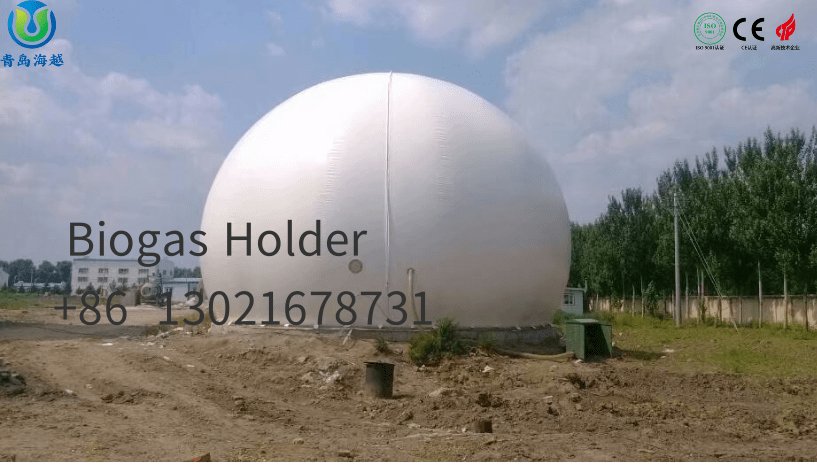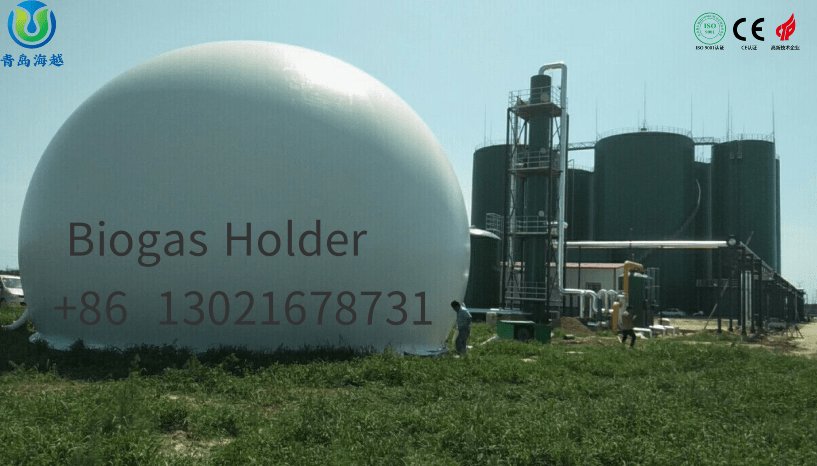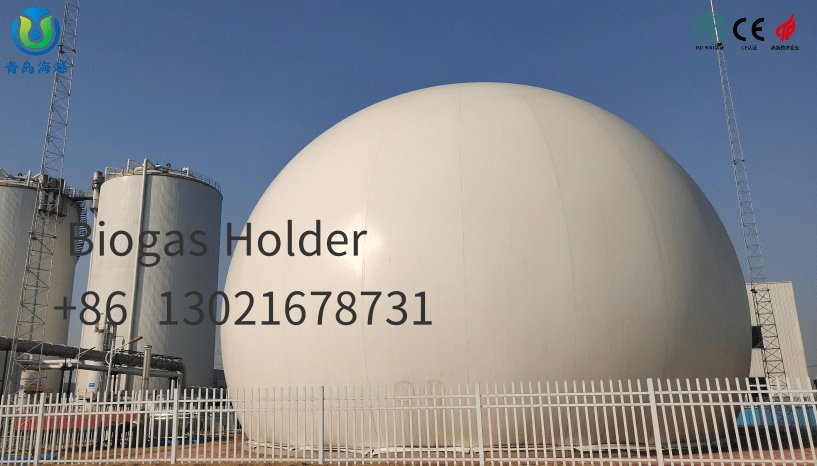The Application Prospects of Double Membrane Gas Holders in Sustainable Energy and Smart Management
With the global shift in energy structures and increasing awareness of environmental protection, biogas, as a clean energy source, is gaining growing attention. Double membrane gas holders, as key equipment for gas storage and regulation, have been widely applied in various fields, especially in the storage and regulation of biogas, landfill gas, and natural gas. This article explores the role of double membrane gas holders in sustainable energy management, focusing on innovations in membrane materials, smart management, low-carbon goals, and economic feasibility.

(800m³ double membrane biogas holder)
A double membrane gas holder consists of two layers of membranes. The inner membrane stores the gas, while the outer membrane provides protection and support. The space between the inner and outer membranes forms a gas-tight area that prevents gas leakage, and the elasticity of the outer membrane allows the gas holder to expand or contract in response to changes in gas pressure. This design enables the double membrane gas holder to have efficient gas storage capacity and adapt to fluctuations in gas supply, especially in the production and use of renewable energy.
Compared to traditional steel gas holders, double membrane gas holders are lightweight, easy to install, and have low maintenance costs. Their flexible structure and scalability make them adaptable to a variety of application scenarios.

(200m³ double membrane biogas holder)
In recent years, innovations in membrane materials have become a key area of development for double membrane gas holders. Traditional membrane materials such as PVC and rubber, while durable under certain conditions, require higher resistance to UV radiation, corrosion, and high temperatures. With technological advancements, the introduction of new composite materials and nano-coatings has greatly improved the performance of these membranes.
For example, the use of self-healing membrane materials enables the membranes to automatically repair minor damages, extending their lifespan and reducing maintenance costs. Additionally, the ability of membrane materials to withstand extreme weather conditions, such as high heat, severe cold, and high humidity, has been enhanced, allowing double membrane gas holders to operate reliably in such environments. These advancements have broadened the reliability and application range of double membrane gas holders.

(1200m³ double membrane biogas holder)
With the continuous development of IoT and smart technologies, the smart management of double membrane gas holders has become a hot topic. By installing sensors, PLC control systems, and wireless communication modules in double membrane gas holders, real-time monitoring of gas pressure, temperature, humidity, and membrane condition can provide operators with accurate data and real-time alerts.
Smart control systems not only improve the efficiency of gas holders but also reduce human intervention and minimize human error. With this data, operators can perform predictive maintenance, identifying potential failures in advance, thus reducing maintenance costs and downtime.
Furthermore, the smart system can be integrated with other energy management systems, optimizing the entire biogas production and utilization process, ensuring maximum energy efficiency.
In the context of a global push for a low-carbon economy and the transition to green energy, double membrane gas holders, as an efficient gas storage solution, offer significant environmental advantages in biogas, landfill gas, and other renewable energy projects. By collecting and storing biogas generated from agricultural waste, landfill gas, and other sources, double membrane gas holders help reduce the emission of methane and other greenhouse gases, contributing to the mitigation of global climate change.
Additionally, double membrane gas holders enhance gas utilization efficiency, ensuring stable gas supply, which supports the development of the biogas industry and reduces dependence on fossil fuels. As technology continues to advance, the carbon emissions of double membrane gas holders will further decrease, making them an essential component in achieving low-carbon or zero-emission goals.
While the initial investment in double membrane gas holders may be relatively high, their long-term economic benefits are significant. First, the low maintenance costs and long service life of double membrane gas holders make them a cost-effective choice. Secondly, through smart management and efficient gas regulation, double membrane gas holders can reduce energy waste, increase gas utilization efficiency, and enhance economic returns.
Moreover, the scalability of double membrane gas holders allows them to be applied in projects of varying sizes. Whether it’s a small agricultural waste treatment plant or a large landfill gas recovery project, double membrane gas holders can provide flexible solutions to meet different project needs.
Double membrane gas holders have been widely applied in many regions around the world, especially in Europe, North America, and Asia. For example, countries such as Germany and Sweden extensively use double membrane gas holders in landfills and agricultural waste treatment plants to store and regulate biogas. As technology continues to evolve, more countries and regions are beginning to focus on the application of double membrane gas holders, gradually incorporating them into national energy strategies and environmental policies.
In the future, as energy transitions deepen and environmental policies become stricter, the application of double membrane gas holders will become even more widespread. Driven by innovations in smart technologies and materials, the efficiency and reliability of double membrane gas holders will continue to improve, making them an indispensable part of future sustainable energy systems.
As an efficient and sustainable gas storage solution, double membrane gas holders, with their technological innovations, smart management, environmental benefits, and economic feasibility, are gaining increasing global applications. In the future, with further optimization of membrane materials and advancements in smart technologies, double membrane gas holders will play an even more significant role in regulating and storing renewable energy, achieving low-carbon goals, and addressing global climate change.